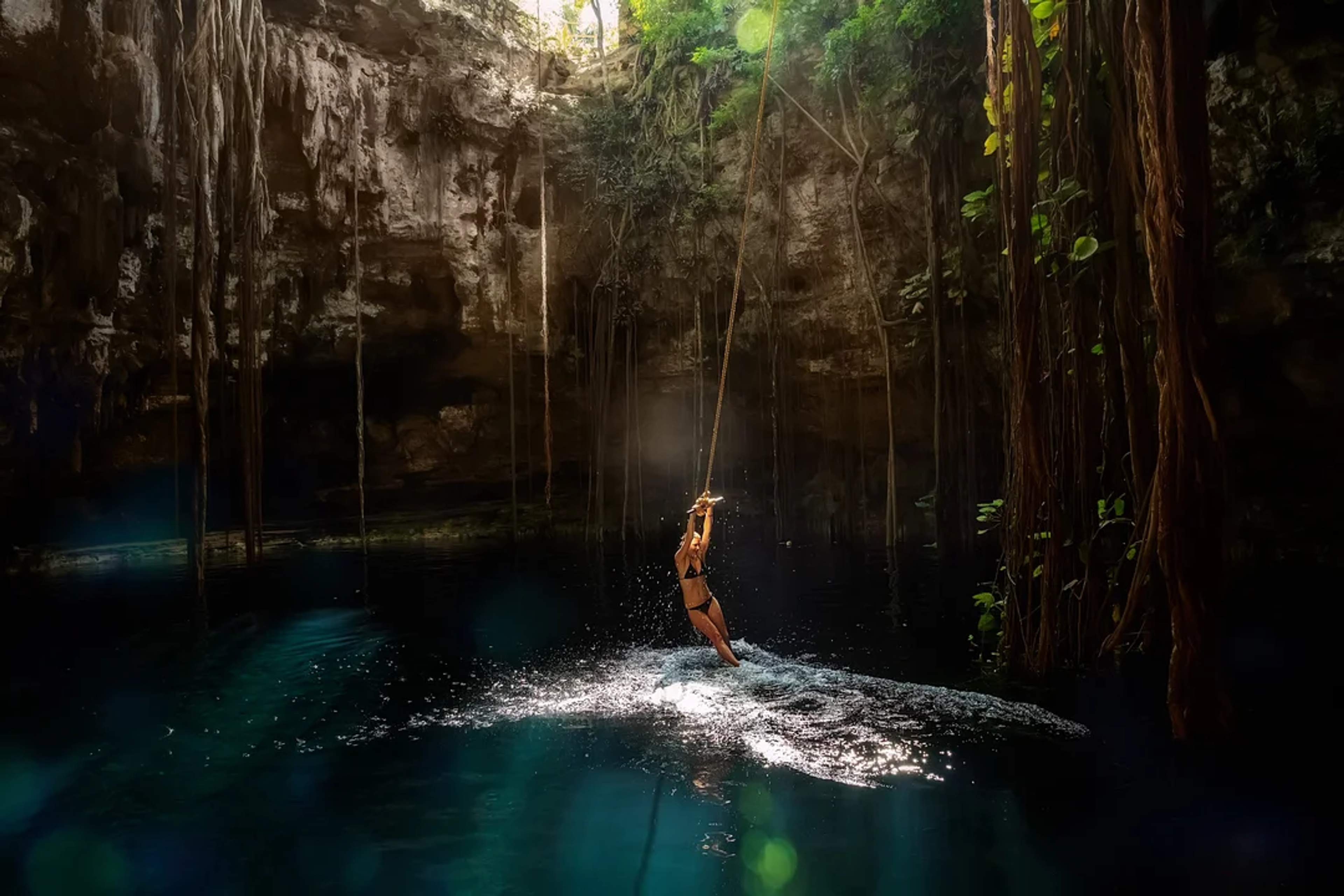Picture this: crystal-clear turquoise waters inside ancient limestone caves. These natural sinkholes—Cenotes Tulum—are Mexico's underwater treasures that you won't find anywhere else.
But they're not just pretty swimming spots—these sacred wells once hosted Maya ceremonies and now offer us a peek into an underwater realm.
Dive into Cenotes in Tulum and you'll carry the memory forever—whether it's those magical light beams cutting through semi-open caverns or swimming in waters once worshipped by an ancient civilization.
What Are Cenotes & Why Are They Important?
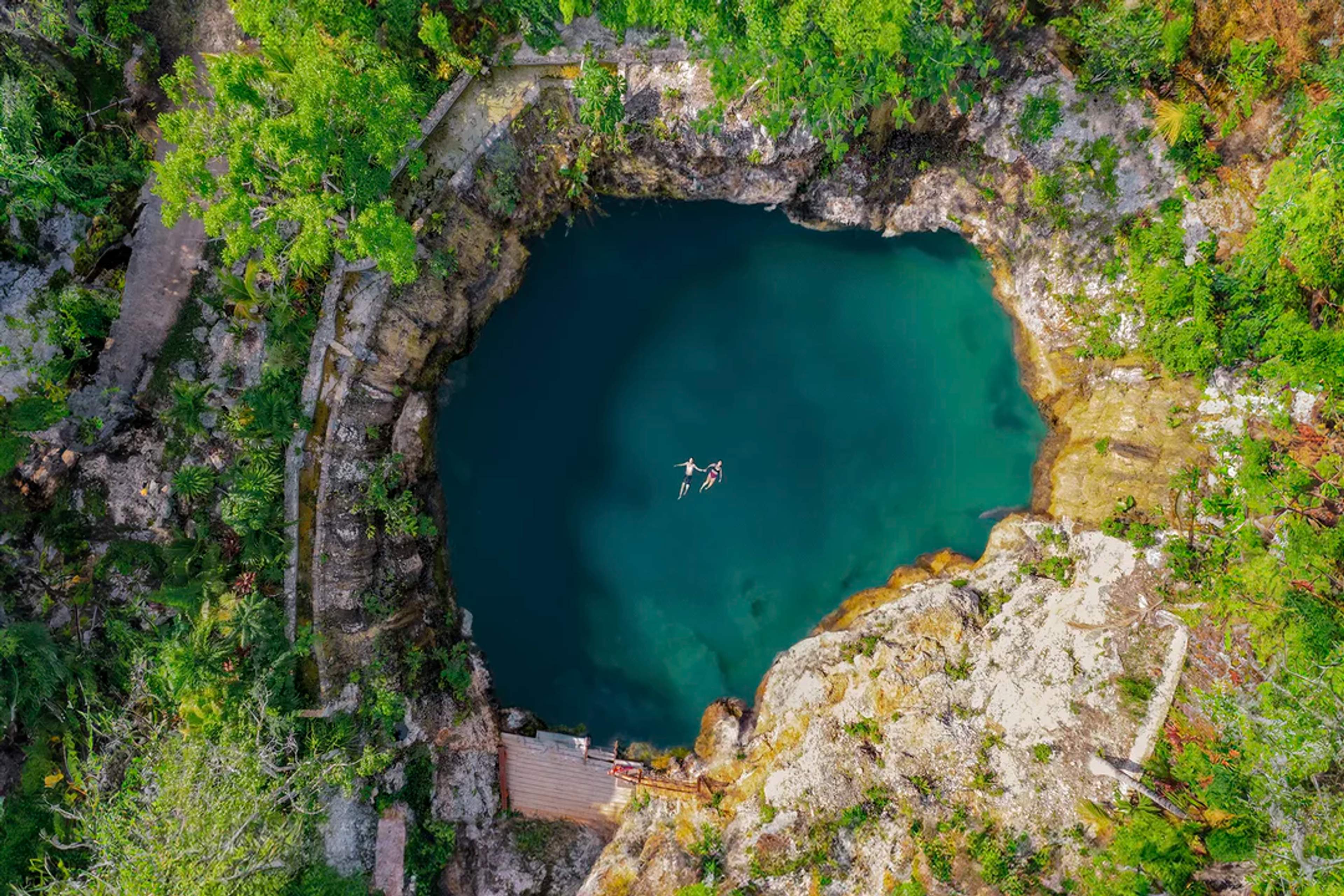
These underwater caves started forming about 8,000 years ago when limestone bedrock collapsed, revealing pristine groundwater pools below. "Cenote" comes from "dzonot," the Maya word for "sacred well"—a perfect name for these doorways to another world.
From an environmental standpoint, cenotes give us access to what scientists have confirmed is the planet's largest underground river system—more than 700 kilometers running beneath the Yucatán Peninsula. This massive freshwater network kept entire Maya civilizations alive in a region with almost no surface water.
The ancient Maya saw cenotes as much more than water sources. They believed these chambers were passages to Xibalba—their underworld—where priests conducted sacred rituals. Archaeological discoveries have found ceremonial objects and human remains in cenotes, proving their spiritual importance. So when you swim here, you're connecting with thousands of years of human history.
Cenotes Tulum: What Makes it So Special?
Cenotes Tulum stand out even among the 6,000+ natural sinkholes across Yucatán. The water is incredibly clear because it's naturally filtered through limestone, creating visibility that often exceeds 30 meters.
While some regions make you trek for hours to find a cenote, Tulum has dozens within a 30-minute drive from downtown. This concentration exists because the area sits on an especially porous section of limestone shelf.
The living creatures in Tulum's cenotes make them even more fascinating. These waters host unique ecosystems including rare blind cave fish that evolved without eyes, specialized crustaceans found nowhere else, and ancient mangrove systems that protect these fragile environments.
Each cenote has its own personality—some call for adventurous cliff jumps while others invite quiet moments among stalactites that have grown millimeter by millimeter across thousands of years.
Four Distinct Types of Cenotes Tulum Offers
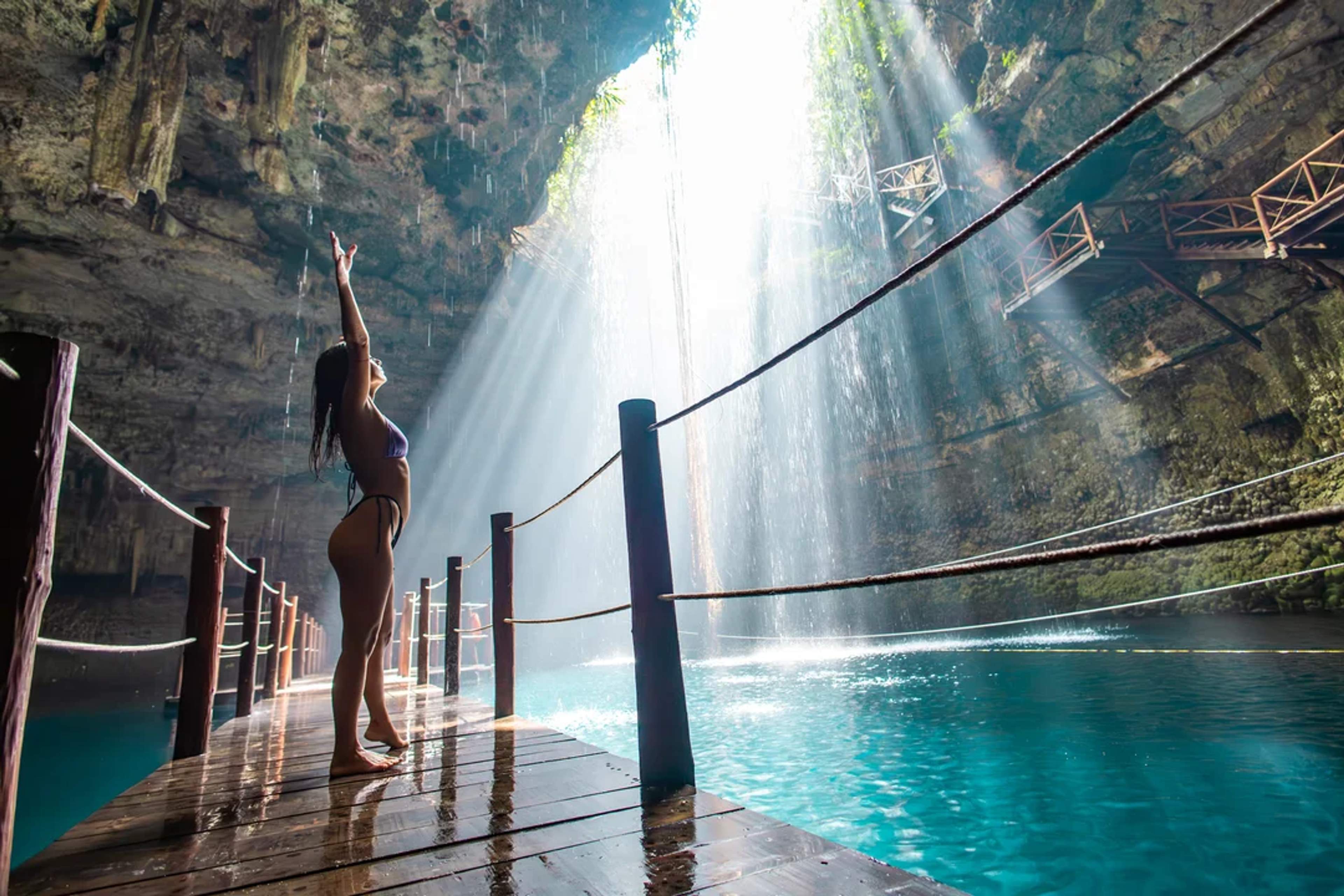
Open Cenotes
Open cenotes have fully collapsed roofs, creating natural pools completely open to the sky. This full exposure lets sunlight fill the turquoise waters, making them perfect for swimmers and photographers.
Cenote Cristalino shows this perfectly. Just 20 minutes south of Tulum on the highway to Playa del Carmen, its open structure features transparent waters reaching 5-6 meters deep at the center. There's even a small 3-meter cliff for jumping. The abundant sunlight makes underwater photos look amazing here, with light beams cutting deep into the blue.
Cenote Azul, near Cristalino, is another great open cenote. Its massive pool stretches almost 60 meters across, with different swimming zones for various comfort levels—from shallow, sandy areas perfect for kids to deeper sections for confident swimmers.
Semi-Open Cenotes
Semi-open cenotes have partially collapsed ceilings where concentrated sunbeams shoot through openings into the water below. This natural spotlight creates those iconic light rays you see in classic Yucatán photos.
Cenote Suytun, though closer to Valladolid (about 1.5 hours from Tulum), perfectly showcases this with its famous stone platform positioned right under a ceiling hole. When the sun hits just right, a single powerful light beam illuminates anyone standing on the platform, creating one of Mexico's most photographed natural scenes.
Closer to Tulum, Cenote Tak Be Ha offers a less crowded semi-open experience about 30 minutes away. Its partial roof opening creates dramatic light effects while keeping the magical cave atmosphere. The name means "hidden water" in Maya—fitting for its somewhat secret location that helps keep it peaceful.
Cave Cenotes
Cave cenotes remain almost completely enclosed, with very little natural light entering through small openings, if any. These underground pools often feature spectacular limestone formations and need artificial lighting to explore.
Dos Ojos ("Two Eyes") is probably the most famous cave cenote system near Tulum, just 22 kilometers north. This extensive underwater cave network has two main pools connected by a 400-meter passage. With visibility routinely exceeding 30 meters, Dos Ojos ranks among the world's top cavern diving spots. Even non-divers can snorkel through parts of the lit caverns, admiring stalactites formed over thousands of years.
Cenote Calavera, nicknamed "Temple of Doom" after the Indiana Jones movie, offers another fascinating cave experience just 3 kilometers from downtown Tulum. Its small surface opening requires you to climb down a ladder or make a 3-meter jump through a hole barely wider than your body. Below, the cavern opens into a big underground chamber where you can explore beneath hanging stalactites.
Ancient Cenotes
Ancient cenotes stand out not mainly by their physical shape but by their documented historical importance to Maya civilization, often containing archaeological evidence of ceremonial use.
Gran Cenote, just 4 kilometers from Tulum's center, combines stunning natural beauty with rich history. Archaeological research has found Maya artifacts over a thousand years old, including ceremonial offerings.
The site has multiple connected caverns with both open and covered sections, making it a hybrid cenote showcasing different formation types. Small turtles live in certain areas, adding to the experience.
Best Ways to Experience Cenotes in Tulum
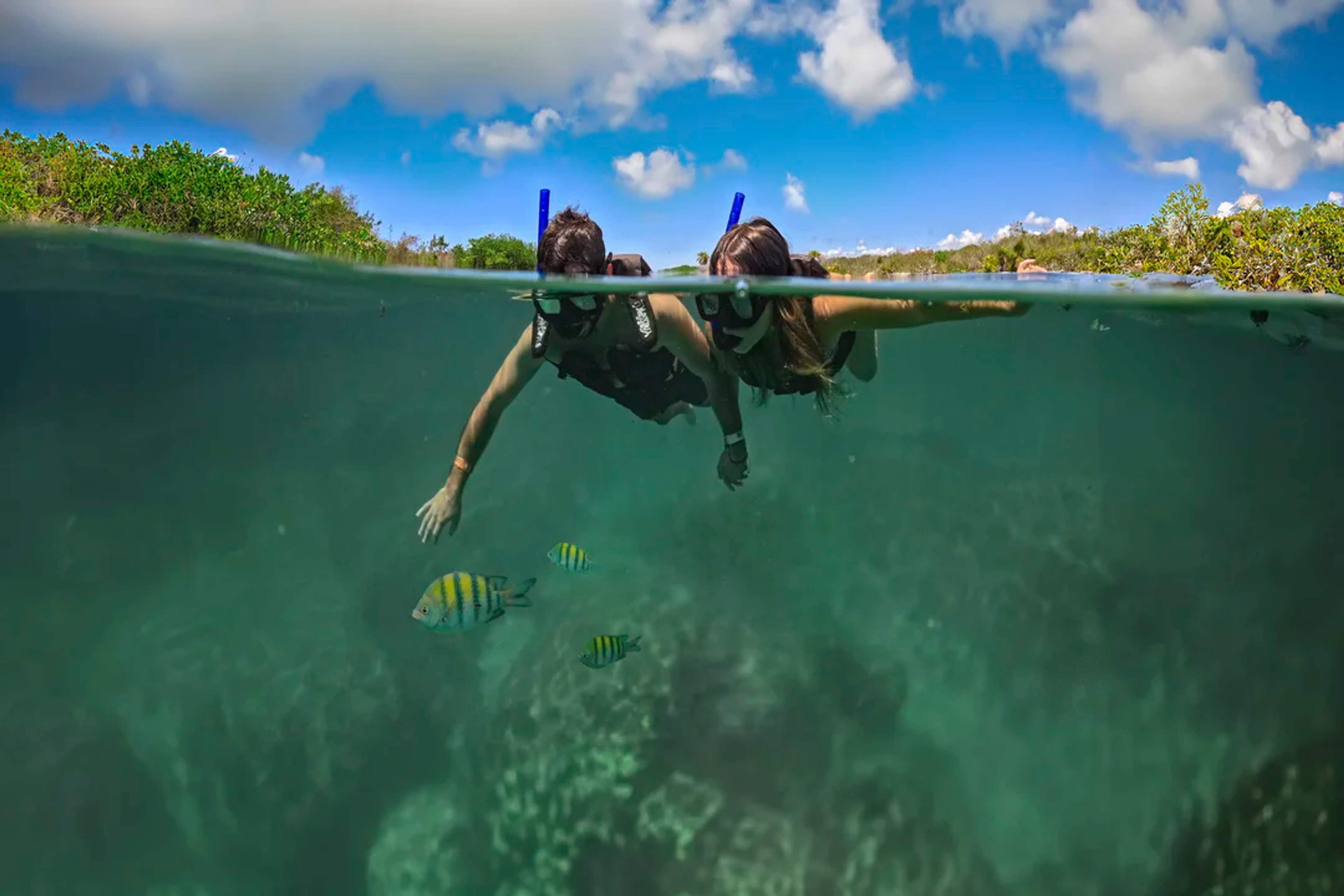
While visiting cenotes on your own gives you flexibility, a Tulum cenote tour will offer real advantages: expert safety supervision, transportation between distant sites, quality equipment, and cultural background that turns a simple swim into a deeper connection with Maya heritage.
For a personalized experience, consider our private cenote tour, which allows you to explore Tulum's cenotes at your own pace with a private guide.
Another excellent option is the cenote and lagoon tour (https://www.cancun-adventure.com/en/tour/cenotes-and-paradise-lagoon/), where you can explore beautiful cenotes and enjoy the serene waters of a nearby lagoon.
Tulum & Akumal Adventure
The Tulum and cenote adventure delivers exactly what it promises—exploring Tulum's archaeological sites and swimming with turtles in Akumal, plus visit a beautiful cenote.
For those interested in a unique experience combining cenote exploration and swimming with sea turtles, consider our cenote and turtle swim.
Ek Balam Ruins Tour
The Ek Balam Ruins tour pairs archaeological wonders with natural beauty, combining the less-crowded Ek Balam pyramid complex with a refreshing cenote swim. This 6-hour journey is perfect for families wanting both education and fun.
Private Chichen Itza Tour
The Private Chichen Itza Tour offers personalized cenote visits tailored to your group's interests and swimming abilities. This tour gives you unmatched customization and attention from expert guides.
Holbox Tour
Take a break from Tulum’s beaches with a day trip to Isla Holbox, a laid-back island known for its turquoise waters and sandy streets. This guided Holbox Tour includes a refreshing swim in the ocean and a stop at Yalahau—a stunning freshwater spring often mistaken for a cenote. The mix of saltwater and freshwater experiences makes for a perfect escape into nature.
Each tour comes with professional guides who explain how cenotes formed, their cultural importance, and their ecological value, turning what might otherwise be just a swim into a full understanding of these natural wonders.
Ready to explore these incredible natural wonders? Visit our Tours Page to book your Cenotes Tulum adventure today!
Tips for Visiting Cenotes in Tulum
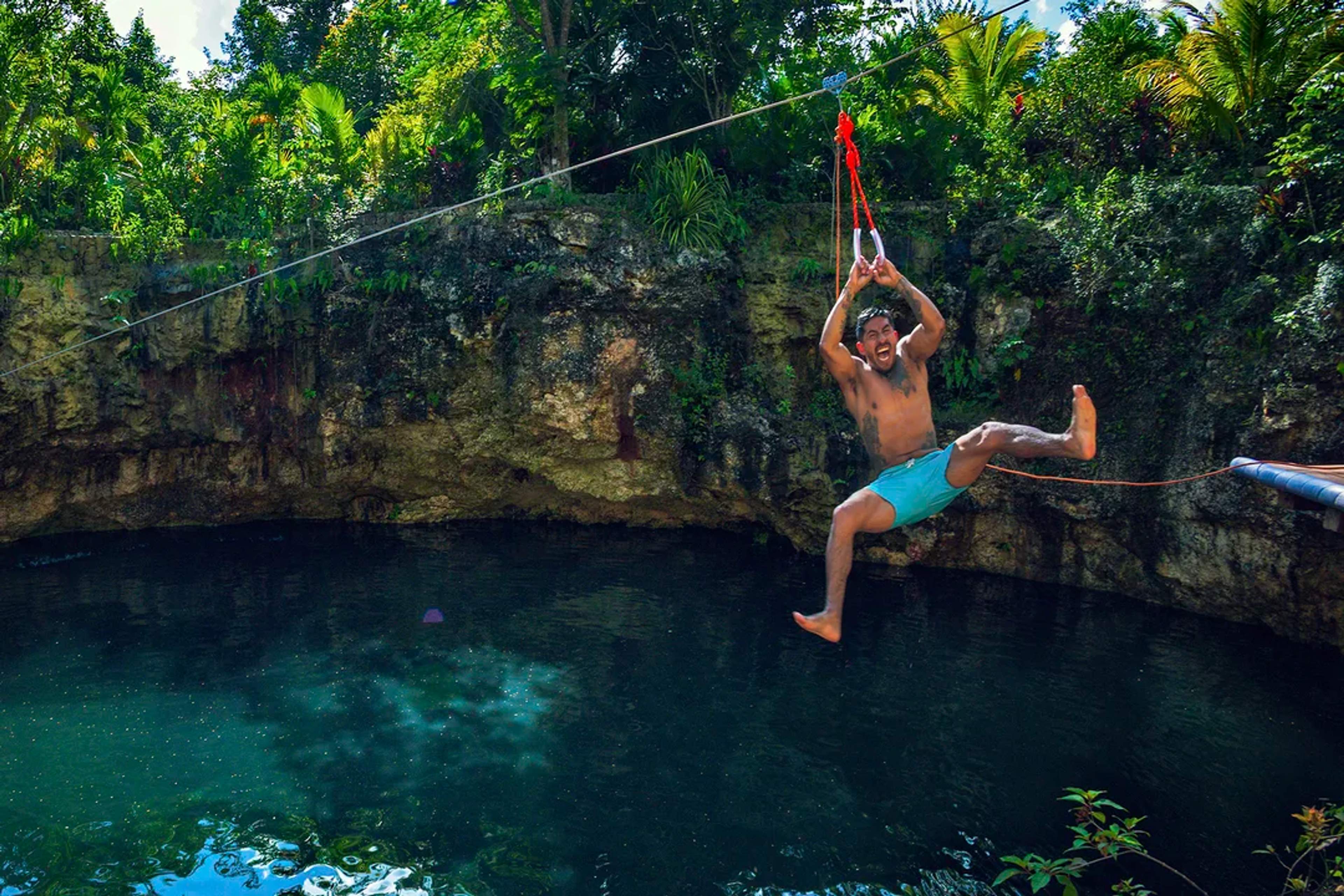
Timing
Show up before 10 AM or after 3 PM to beat the crowds, especially at popular spots like Gran Cenote. Early mornings often have less than half the visitors compared to midday.
The tranquility of a less crowded cenote significantly enhances your experience, allowing you to fully appreciate the natural beauty and take unobstructed photos without waiting your turn.
Essential Gear
When visiting cenotes, come prepared with sun protective clothing for open cenotes to shield yourself both during the journey and while swimming in open cenotes. Water shoes are invaluable for navigating the often slippery limestone surfaces surrounding cenote entrances.
Always bring a dry bag to protect your electronics and valuables from water damage, as splashes are inevitable even if you don't plan to swim. Most cenotes only accept cash for entrance fees, so be sure to have enough pesos on hand before leaving Tulum.
Don't forget to pack your own towel, as these are rarely provided at cenote sites and you'll appreciate having one after your refreshing swim.
Environmental Protection
Take a quick shower to rinse off any lotions, sunscreen, or oils before entering the cenote waters, as these substances can damage the delicate ecosystem. Never touch stalactites or stalagmites, no matter how tempting it may be—the natural oils on human skin can halt their growth, which takes thousands of years to develop.
Be conscientious about all your waste and take everything with you when you leave, including seemingly harmless organic items like fruit peels which don't belong in these pristine environments and can alter the water chemistry if left behind.
Safety Considerations
Always wear the provided life jackets if you're not a strong and confident swimmer, even if the water looks calm and shallow—some cenotes have unexpected depth changes. Before diving or engaging in more adventurous activities, inform your guides about any medical conditions that might affect your safety in the water.
Stay on marked paths and designated swimming areas, as unmarked zones might have unstable ground that could collapse or hidden underwater obstacles that pose safety risks.
For more information on cenote swimming safety, check out our guide to ensure a safe and enjoyable experience.
Photography Tips
While the use of cameras and cell phones isn’t allowed during our cenote tours, don’t worry—you won’t miss a moment. Our professional photographers will be capturing all the highlights of your experience, from the underwater magic to the dramatic cave lighting.
You’ll have the chance to purchase stunning photos at the end of the tour, so you can focus on enjoying the moment while still bringing home the memories.
Entrance Fees
Most cenotes charge a reasonable entrance fee per person, depending on the popularity and available facilities. The standard entry fee generally includes access to basic amenities such as changing rooms and restrooms, while higher-end cenotes might also offer lockers, equipment rentals, and guided explanations about the site's formation and history.
If you’d rather skip the hassle of finding transportation, figuring out where to eat, and covering entrance fees separately, joining an organized tour is the way to go. It’s a convenient, all-in-one option that lets you focus on enjoying the experience.
Cultural Respect
Keep conversations quiet and voices low, especially in cave cenotes where sound echoes dramatically, allowing everyone to enjoy the peaceful atmosphere these natural sanctuaries provide. Always remember that these sites held profound spiritual significance for Maya people and continue to be culturally important to local communities today.
Occasionally, you might encounter traditional Maya ceremonies being conducted at certain cenotes; if you do, maintain a respectful distance and refrain from photographing or disrupting these sacred practices, showing the same reverence you would expect at any religious site.
For more insights into local customs, you might be interested in learning about drinking in Mexico and how to navigate cultural norms respectfully.
Visiting other significant sites, you might be interested in discovering the Cobá ruins, which can also enrich your understanding of the area's heritage.
Enjoy Tulum's Blue Treasures
Swimming in a Tulum Cenote connects you to natural history spanning millions of years and cultural traditions thousands of years old. These pristine waters ask only that we respect them—keeping their clarity for future generations.
The ancient Maya believed cenotes connected earth with something greater. Whether you experience these waters through cultural understanding, ecological appreciation, or simple joy, each cenote visit becomes more than just a swim—it becomes a memory carved in time, just as water has carved these caves from stone.
If you've never been to Mexico, cenotes offer a great introduction to the country's natural wonders. Tulum is definitely a safe destination to visit! Since this area brings so much tourism revenue to Mexico, there's a strong commitment to visitor safety and security throughout the region. Even beyond the popular tourist zones, Tulum maintains a reputation as a safe city with low crime rates.
Don't miss the chance to experience these magical underwater worlds for yourself! Book your Tulum and cenotes tour today and discover why these hidden pools have fascinated humans from ancient Maya to modern travelers.
